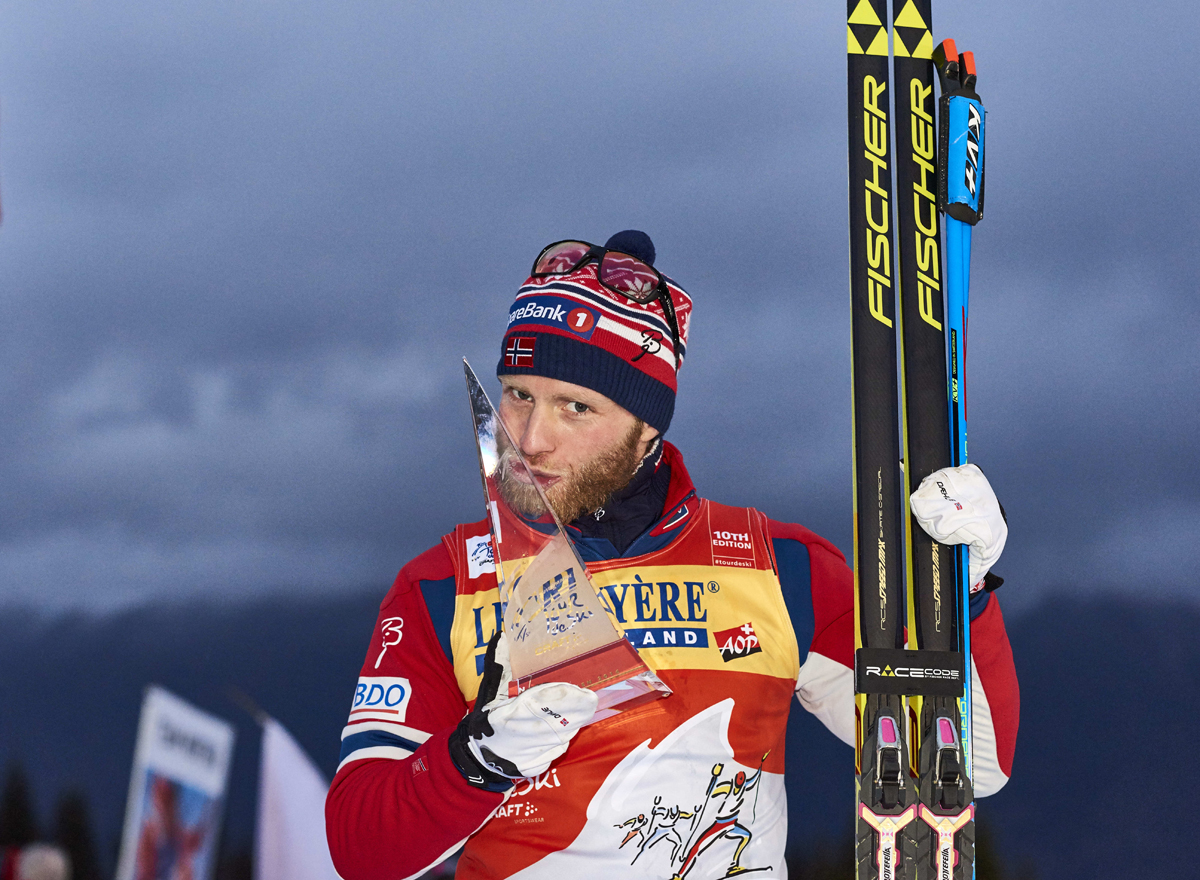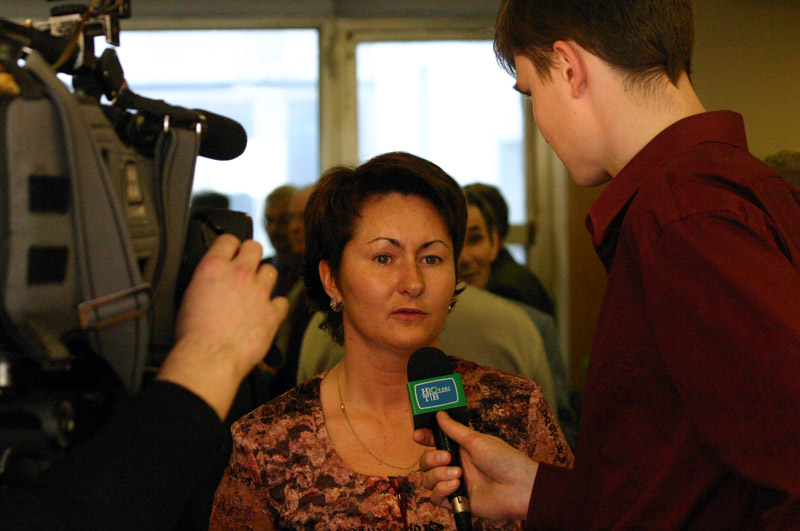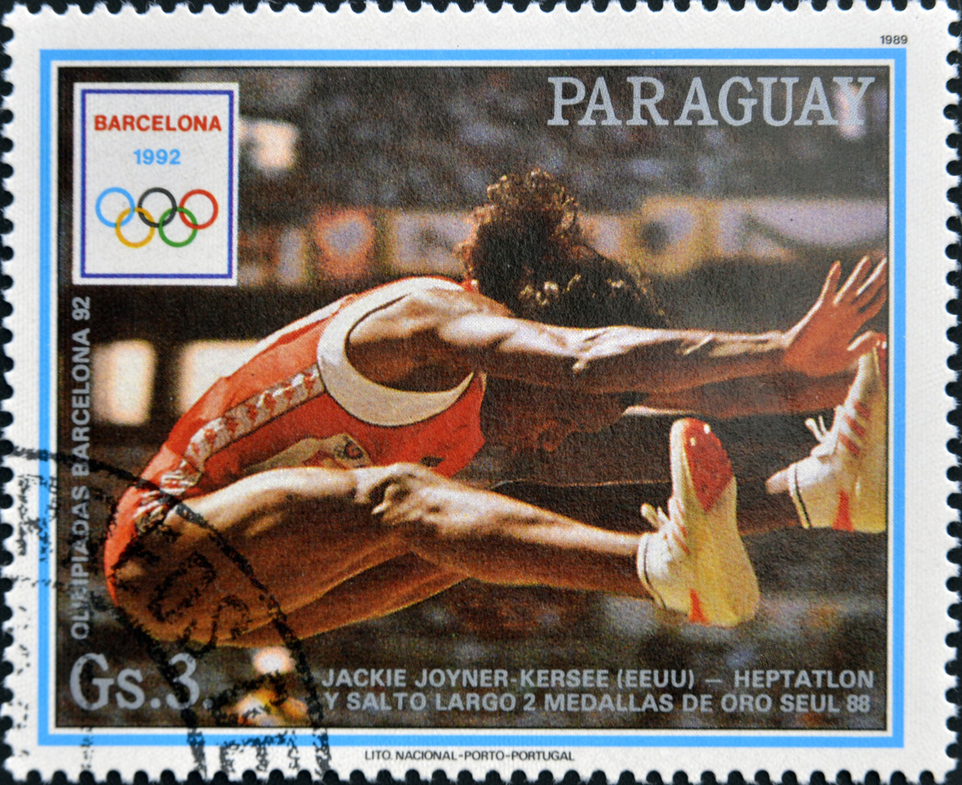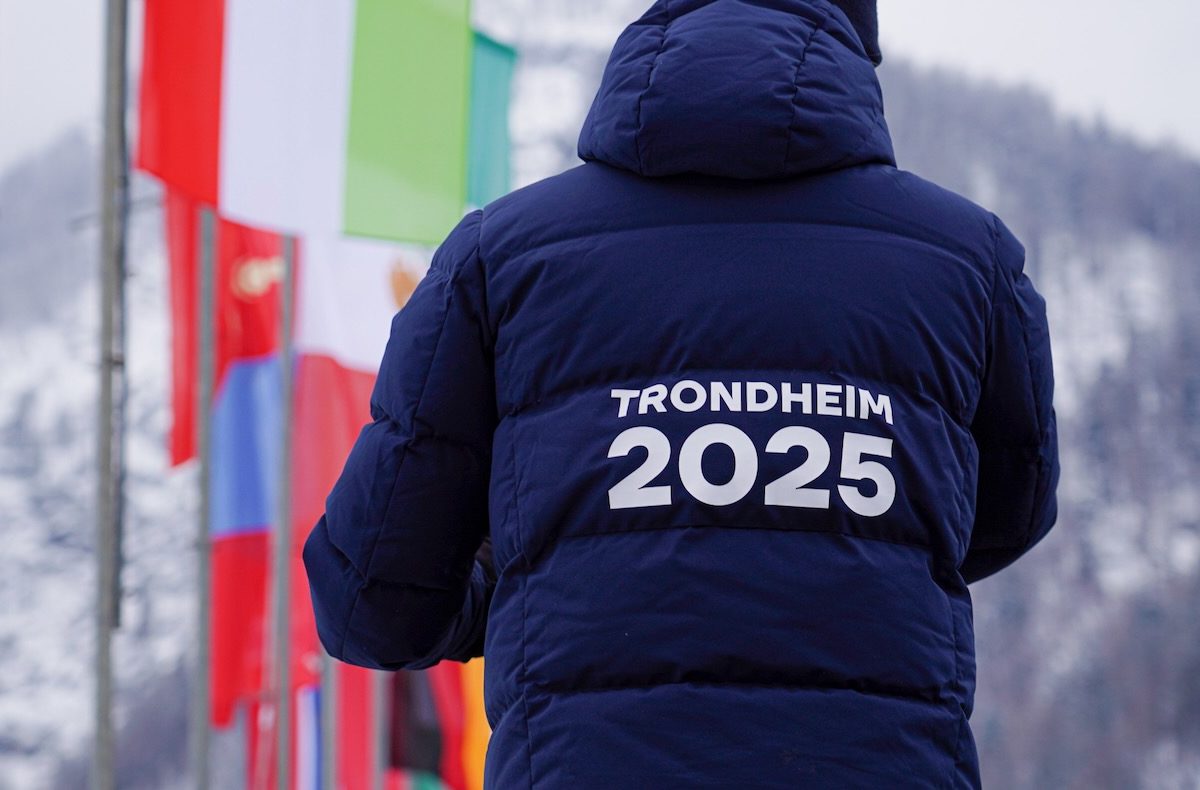
Elena Välbe, the President of the Russian Cross-Country Ski Association, recently had some thoughts on how the Norwegians attain their dominance in cross-country skiing: through inhaler use.
“It’s annoying because this team, everyone has asthma,” she said, according to a translation of an interview with the Russian news service Izvestia. “I personally don’t understand what kind of asthma you can have, and still ski so fast… [Martin Johnsrud] Sundby said in a recent interview that in Oberstdorf it was bad because it was warm, and he lost his breathing and had to use powerful drugs. For us, this is nonsense. If a person is so sick then how are they going as if they were healthy? It seems to me that if someone is sick, they don’t have to compete.”
She went on to say that the trend of inhaler use in young Norwegian athletes was “alarming”.
Many of the former World Champion’s statements are far off the mark, scientifically speaking. But Välbe isn’t the first to imply that the Norwegians obtain an unfair pharmaceutical advantage.
Back in 2010, Polish superstar Justyna Kowalczyk said that Norway’s Marit Bjørgen never would have won her three Olympic gold medals in Vancouver without her inhaler – not because she had asthma and needed them, but because she didn’t have asthma and was simply using an inhaler to boost her performance.

Inhalers using albuterol (also called salbutamol) and other drugs of that class, called beta-2 agonists, seem to have an unfair reputation as narrowly-disguised cheating in parts of the sports world. This is despite the fact that numerous studies have shown that such drugs are not performance-enhancing.
And with Bjørgen currently on the sidelines after having her first child, Sundby appears to be the new poster child for winning with asthma. The winner of the Tour de Ski and the current World Cup leader, Sundby initially didn’t respond to Välbe’s comments.
Besides asthma, there are also other reasons to use inhalers containing beta-2 agonists or other drugs. A number of disorders fall under the umbrella of airway hyper-responsiveness, when the airways narrow in response to some challenge more easily or quickly than they would in a healthy person. Symptoms include coughing, wheezing, and shortness of breath.
“Airway dsyfunction as described by Price in 2014 includes the following: airway hyper-responsiveness, exercise-induced asthma, and/or asthma,” explained Dr. Michael Kennedy, a researcher at the University of Alberta who has studied airway inflammation in cross-country skiers. “Airway hyper-responsiveness in reality is the most important of these specific definitions because it accurately describes the phenomenon of airway narrowing (bronchoconstriction) due to exercise or physical activity.”

Those with airway hyper-responsiveness and another disorder in that family, exercise-induced bronchospasm (EIB), also treat their challenges with inhalers. Most individuals with asthma also have EIB, but many people have EIB without having asthma.
“Both asthma and EIB are likely under-diagnosed, but diagnosis can be tricky and there are look-alikes, like vocal cord dysfunction,” Dr. Krystian Bigosinski, a sports medicine doctor in Maine who works with the U.S. Ski Team, explained in an email. “That is why it is very important to get a solid diagnosis with the help of testing, such as spirometry with exercise or cold air challenge.”
Beta-2 agonists are generally prohibited by the World Anti-Doping Agency, but inhaled salbutamol, formoterol and salmeterol (common ingredients in inhalers) are allowed up to certain doses without a Therapeutic Use Exemption (TUE).
That’s good news for a lot of athletes.
“The treatment for both asthma and EIB is similar, and in both cases, the first line treatment is albuterol,” wrote Bigosinski. “If that doesn’t work, other medications are added, such as long-acting beta-agonists, inhaled corticosteroids, mast cell stabilizers, and leukotriene inhibitors. EIB, if not accompanied by true asthma, typically responds better and often only necessitates the use of EIB, by itself, is rarely if ever life-threatening. However, EIB with a background of asthma is more likely to need other medications as mentioned above, and EIB with asthma can be a medical emergency.”
Välbe seems to suggest that if you need treatment, you shouldn’t be competing.
“It is mostly a lack of understanding for the use of medications,” Vidar Löfshus, the chief of the Norwegian ski team, told Norwegian newspaper Aftenposten regarding Välbe’s comments. “Use of asthma medications are strictly regulated in doping legislation, no one does it for performance enhancing reasons. There are many people who have some issue or another with their airways, and when they are allowed to use drugs they can get to a normal level with their airways.”
The data backs him up: a lot of athletes have asthma or other airway hyper-responsiveness, and even for those who don’t, using inhalers does not provide a performance advantage.
Many Asthmatics in Elite Sport
In fact, asthma and other respiratory problems are extremely common in elite athletes, especially those who compete in unusual air conditions: very cold air, very dry air, or the chlorine-filled air inside a swimming hall.
The prevalence is high enough that a team of British researchers and doctors from, among other institutions, the National Heart and Lung Institute recommended that airway dysfunction be classified as an “occupational disease” in athletes.
“Applying a label of occupational disease in this setting raises implications for the care and treatment afforded to elite athletes,” the authors wrote. “Indeed it is a key mandate of the International Olympic Committee–Medical Commission (IOC-MC) that no athlete is harmed by exposure to sport and that all care is taken to ensure their health is maintained.”
Among athletes, most asthma diagnoses could be broken down into two categories. A research team from Portugal and Norway set out to see how prevalent the diagnoses of each were, hoping this could lead to better targeted treatment.
The first type of asthma they identified is classic asthma, associated with allergy problems. The second is what the authors called “sports asthma”: induced by exercise and lacking the connection to allergy that often underlies the disease. In water and winter sports, athletes were three to nine times more likely to have this second type of asthma than those who did not compete in cold weather or in aquatic sports complexes.
“Sports asthma” might be more recognizable when called a term you have probably heard: “exercise induced asthma.”
“There is exercise induced asthma (EIA) and exercise induced bronchospasm (EIB),” wrote Dr. Ed Merrens, the Chief Medical Officer of the Dartmouth-Hitchcock Medical Center in New Hampshire and the former team doctor for the U.S. Biathlon Association. “It is different than childhood asthma. Winter athletes certainly have higher incidence of EIB and EIA.”
What does that mean, in terms of numbers?
An Italian study of 659 summer and winter Olympians over a 12-year period found that 15% of athletes had asthma, and for almost a fifth of those, their asthma was not “under control”. The researchers also found that the proportion of athletes on an Olympic squad who had asthma increased from quadrennial to quadrennial.
A study in Sweden found that depending on the age class investigated, between 20 and 35% of current and former elite skiers reported that they had been diagnosed with asthma by a doctor. Diagnosis was usually during adolescence, and prevalence was higher for women than men.
“Nordic athletes have a high prevalence of airway dysfunction and it is clear (and I mean definitive) that both the cold, dry air that nordic athletes inhale plus the volume of air (total exchange of air over months and years) as well as the flow rate (shear stress on the airway lining) caused by high-intensity intervals and races all combine to induce this,” Kennedy wrote.
Effects of Inhalers
Many, though certainly not all, of those athletes treat their asthma with inhalers of various kinds. And that’s allowed by the World Anti-Doping Agency.
“Inhalers using beta-agonists have absolutely no ergogenic or performance enhancing abilities,” wrote Merrens. “They do not require a use exemption from WADA.”
There’s plenty of research to back up this assertion: inhalers using salbutamol and beta-2 agonists do not enhance athletic performance.
They don’t enhance it in five-kilometer running races, whether using the maximum or half the allowable dose set by the World Anti-Doping Agency, a team from the United Kingdom found.
Salbutamol increases lung function in male cyclists but not power output, a group of researchers from Vancouver agreed.
Nor did a combination of beta-2 agonists (including salbutamol) enhance performance by elite swimmers, a team in Denmark reported.
There are other results, too, but the message is clear: using an inhaler isn’t cheating. That’s in fact why the World Anti-Doping Agency took inhaled salbutamol and salmeterol off the Prohibited List (you can find the classification and legal dose limits, as well as information on which doses are contained in common inhalers, here).
“Everyone can use these in a FIS race if they so choose,” Kennedy, the researcher, wrote. “However the net effect for anyone whom does not have [exercise-induced bronchioconstriction] is negligible: you can’t relax smooth muscle in the airway if it has not been contracted. So Välbe is really politicizing something that is a non issue.”
Can Asthmatics Win?
Asthma can clearly have negative effects not only on health, but on athletic performance. Those are both reasons that the British team suggested designating airway problems as an occupational disease in athletes: the issues seem to be caused by the huge training loads that are part of athletes’ profession, and the diseases also have consequences in both professional and personal life.
But depending on the type and severity of respiratory problems, athletes may still be able to turn in winning performances.
For instance, the Italian study of 12 years of Olympic participants found that asthma had no impact on whether an athlete qualified for an Olympic team or not, and that at the 2008 Games, two of Italy’s 26 medal came from athletes who had asthma.
“Asthma, especially in its moderate or severe forms, can absolutely reduce athletic performance, but not necessarily so,” Bigosinski explained. “There are plenty of athletes who also have asthma that are able to train and compete at very high levels. Developing a good asthma treatment plan can significantly decrease asthma’s effect for many athletes with asthma.”
“There is no question that with proper treatment and even better, warmup, athletes with EIB/EIA can perform at the elite level,” agreed the former U.S. Biathlon Association doctor, Merrens.
Kennedy, the researcher, suggested that perhaps the reason that so many Norwegian skiers have a diagnosis of asthma is that their team is ahead of the curve on detecting and treating the disease. Rather than assume that shortness of breath or post-race cough is just a normal product of racing in cold weather, they look to see if there’s a clinical explanation.
“Using an inhaler is not cheating and many World Cup athletes need and should use an inhaled beta-agonist or inhaled glococorticosteroid for health reasons, and secondly to reduce EIB during racing and training,” Kennedy wrote. “In essence the Norwegians are on top of their game and have a comprehensive screening program for [airway hyper-responsiveness] so that all athletes in all their systems get screened at least once per year and use the best Therapeutic Use Exemption available to them. That is a great example of sport science at work because the Norwegians are using at their at disposal the available evidence to ensure that their athletes have the best performances possible.”
And furthermore, shaming atheltes for using inhalers is dangerous, he concluded.
“I find this disconcerting because having shortness of breath and wheeze that is severe due to EIB can lead to extreme emotional and psychological discomfort, and can be life threatening,” Kennedy wrote.
Chelsea Little
Chelsea Little is FasterSkier's Editor-At-Large. A former racer at Ford Sayre, Dartmouth College and the Craftsbury Green Racing Project, she is a PhD candidate in aquatic ecology in the @Altermatt_lab at Eawag, the Swiss Federal Institute of Aquatic Science and Technology in Zurich, Switzerland. You can follow her on twitter @ChelskiLittle.



